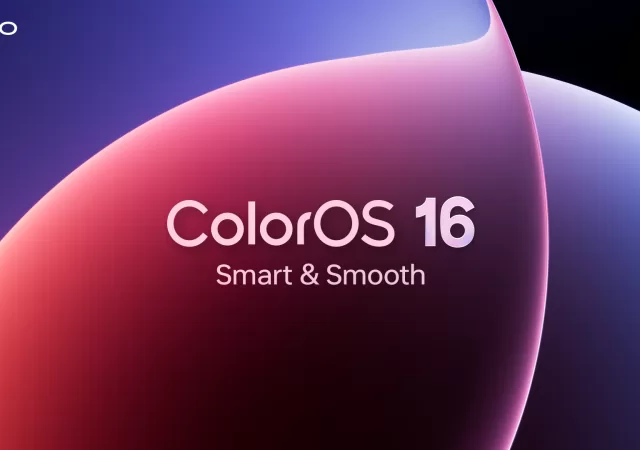2020’s gone and it won’t be missed. For all of the chaos, confusion and change the previous year brought, it helped illuminate a critical facet of Red Hat, our associates, our partners, our customers and our communities. It showed that we are resilient. Not only did we weather it as a company, we helped those around us stand firm through the storm. That’s something to be proud of, and I know that as CEO of Red Hat, I’m thankful at how we as a business, as a pillar of the open source community and as a global organization kept a steady hand throughout.
Red Hat was born out of community. It’s at the center of everything we do. When faced with uncertainty and when we see others in need, that’s when we pull together and show our mettle. Throughout the past year, Red Hatters showed a tremendous capacity for fortitude and humanity. When I first took over the role of CEO, I made the comment that I wanted every Red Hatter who was here at that point to still be here in a year. And I think we’ve held true to that.

At the time, that conversation centered on finding work-life balance when the lines became blurred. Without taking care of our personal lives and mental health, we’re not able to meet the needs of our customers. As associates became school teachers and caretakers, dealt with drastically reduced social interactions and grieved the loss of normalcy, they still served customers and helped them be successful. We didn’t just hunker down and wait for the storm to pass; we still moved forward and made ourselves available to help others.
No time to slow down
While the COVID-19 pandemic stalled many industries, the software industry raced forward. Technologies like cloud computing and automation became more important than ever. They are now firmly in the category of must-have, instead of nice-to-have. As a company, we turned our attention to products and services that our customers need to support remote work, expand digital services, scale to meet demand, become more resilient and keep innovating. I attribute our ability to continue to show strong growth throughout the year to this strategy and I’m so proud of the team for keeping the momentum going.
With our biggest announcements last year, you’ll no doubt sense a theme – making sure that our customers can develop and deploy any app, anywhere. They want the choice and flexibility to use the innovations and technologies on a platform that makes sense for the job at hand, and we’re making sure they can do just that. Red Hat OpenShift is the industry’s leading enterprise Kubernetes platform and highlights a future where containers and virtualization, managed consistently across the open hybrid cloud, are helping customers maintain operations while still bringing new products and services to market faster.

We introduced Red Hat Advanced Cluster Management for Kubernetes, a new management solution designed to help organizations exert more consistent control over their Kubernetes clusters across the hybrid cloud — from bare-metal to major public cloud providers and everything in between.
Once they can deploy anywhere, they need to be able to bring those mixed workloads together and that’s where OpenShift Virtualization comes in. An integrated component of Red Hat OpenShift, we’re giving customers the ability to manage traditional workloads alongside cloud-native services, letting them prepare for the future while retaining existing investments. This helps to break down technology silos that can slow innovation and impact the customer experience.
For those wanting an increased level of support from us, OpenShift Dedicated is a fully managed service of Red Hat OpenShift on AWS, Google Cloud Platform and Microsoft Azure. We continue to enhance and refine the capabilities of this managed offering, providing an option for organizations looking to reduce the operational complexity of infrastructure management, but still get all the benefits of enterprise Kubernetes. This enables their IT teams to focus on building and scaling the next-generation of applications, rather than keeping infrastructure lit up.
One of the benefits of open source is our close connection to the innovation born in open source communities, where new ideas and concepts emerge and incubate. This is a direct link to IT’s future, enabling us to more readily see trends as they evolve. It’s this connection that enabled us to push the envelope in open hybrid cloud computing, and it’s now providing our launchpad for the next wave: edge computing. Edge brings its own challenges for administrators and developers alike, so we’ve delivered new capabilities for Red Hat Enterprise Linux and Red Hat OpenShift to help bring edge computing into hybrid cloud deployments.
Coming together
The channel is what made Red Hat. Without our partner ecosystem, Red Hat would be a very different company. We have been successful because of our independence and our work across a broad spectrum of cloud and service providers, including Amazon, Google, IBM and Microsoft. As the saying goes: “actions speak louder than words.” Our neutrality is something that can’t change and you can see it in some of the moves we made this year.
Red Hat and Microsoft have been working to co-develop hybrid cloud solutions for years, which ultimately led to Azure Red Hat OpenShift, the industry’s first jointly-engineered, managed and supported OpenShift service on a leading public cloud. This year we continued our drive as a leading enterprise Kubernetes service on the public cloud with Azure Red Hat OpenShift on OpenShift 4, bringing the power of Kubernetes Operators to Azure along with the flexibility of Red Hat Enterprise Linux CoreOS.

As I’ve said, open source is about choice and about meeting customers where they are, on whichever cloud platform they prefer. With that in mind, we continued our work across the public cloud withRed Hat OpenShift Service on AWS, a jointly-managed and jointly-supported enterprise Kubernetes service on AWS. Red Hat OpenShift is now the common Kubernetes denominator on two of the world’s largest clouds but, most importantly, it’s now easier for our customers to consume OpenShift where it makes most sense for them without sacrificing operational flexibility or service levels.
We’re also seeing the promise of our acquisition by IBM come to fruition, as we scale and work together for powerful world-spanning solutions. Schlumberger represents one of these moments. By collaborating with IBM, this initiative will support its business and provide Schlumberger’s associates global access to its leading exploration and production cloud-based environment and cognitive applications by using IBM’s hybrid cloud technology, built on Red Hat OpenShift.
On the horizon
Just a month in and we’ve already set the tone for the year. All roads, whether it’s through edge computing, serverless or Kubernetes, lead to open hybrid cloud. That’s what we’ve worked to build and where our focus continues to be. We’ve been talking about it for nearly a decade because it’s not just another trend; it’s an enterprise imperative. It’s through the hybrid cloud that we help our customers solve dynamic challenges and keep Red Hat in innovation’s vanguard.
We announced our intent to acquire StackRox, a leader and innovator in Kubernetes-native security. Once the transaction closes, this move will allow us to enhance security for cloud-native workloads by expanding and refining the Kubernetes’ native controls already present in OpenShift while shifting security into the container build and CI/CD phase.

Having a seamless integration between our sales and services strategy and our technology vision is critical to our success, and it calls for the right leader. For nearly a decade, Arun Oberoi has led the team and transformed our go-to-market approach matching our expanding open hybrid cloud portfolio, through strategic acquisitions and new alliances. He will retire later this year and Larry Stack will step into the role of executive vice president of Global Sales and Services. What I appreciate most about him is that he embraces the Red Hat culture and the customer is always the focus. There is a huge opportunity in front of us, as we keep scaling, Larry’s strong experience and the strategic thinking that he brings are going to help us capitalize on it.
Just because we made it out of 2020, doesn’t mean we’re back to business as usual. The pandemic is still impacting the world and organizations are still feeling the effects. The challenges aren’t going away, but we’ve shown resilience and that needs to be a trait that we keep as we move through the year. While 2021 holds many unknowns, one thing that is not unknown is our path forward.






